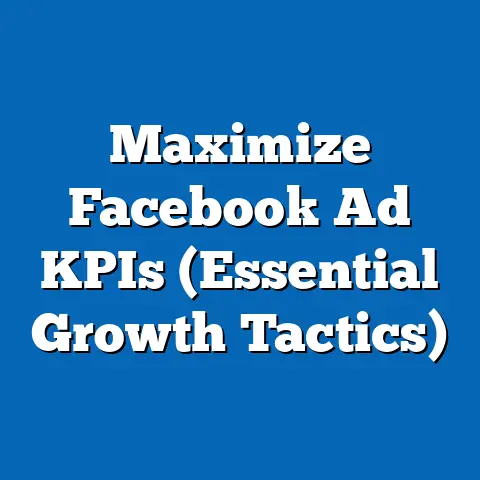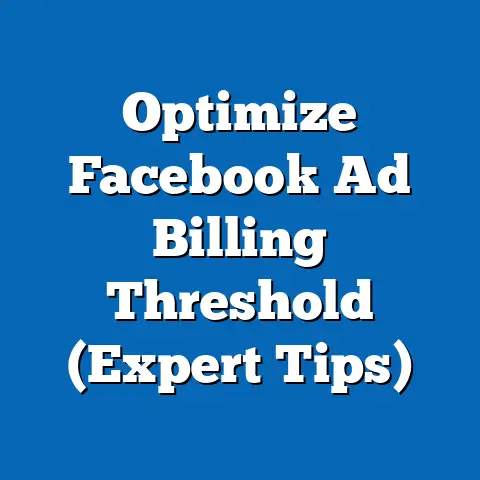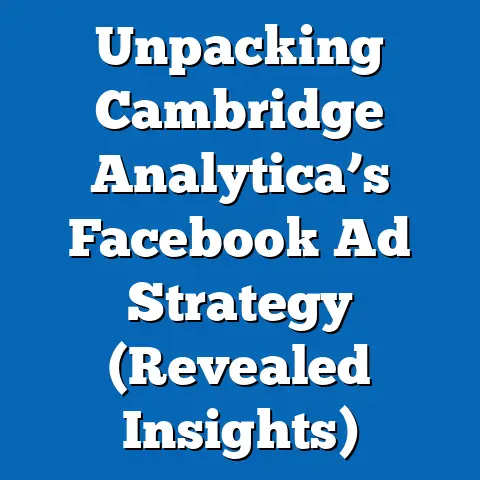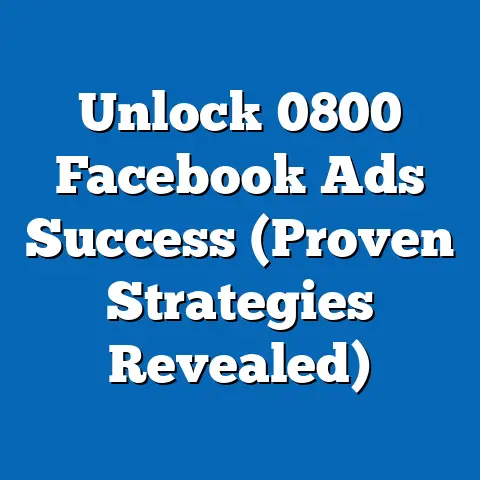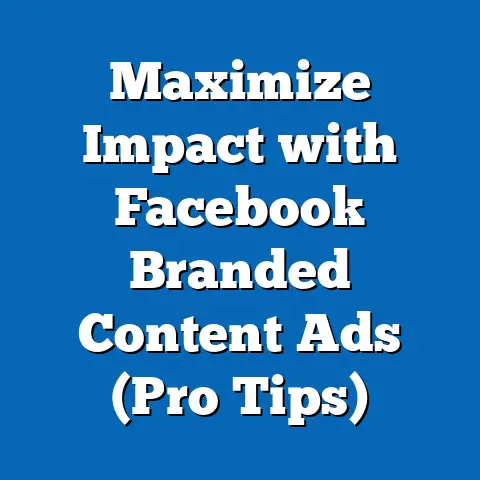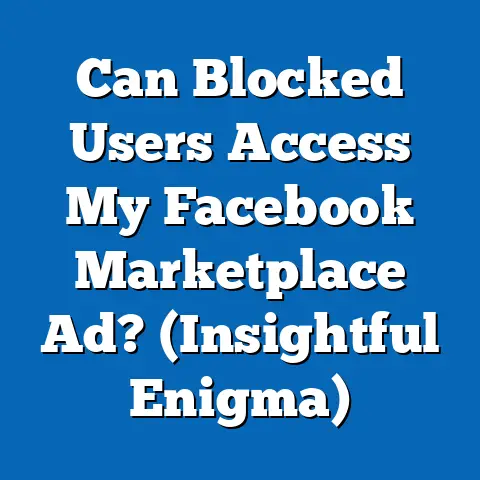Maximize Facebook Video Ads Revenue (Insider Strategies)
Let’s face it, pouring your heart and soul (not to mention your budget) into Facebook video ads only to be met with crickets is one of the most frustrating experiences for any marketer. I’ve been there. Countless hours spent crafting the perfect video, meticulously targeting audiences, and then… a disappointing return on investment. It feels like shouting into a void, especially when you see other brands seemingly printing money with their video ads. The truth is, the digital advertising landscape is fiercely competitive, and the sheer volume of content vying for attention on Facebook can make it feel impossible to break through the noise. But don’t despair! The potential of Facebook video ads is still immense. The key lies in understanding the platform, adopting proven strategies, and leveraging insider knowledge to maximize your revenue.
This guide is designed to bridge the gap between the potential of Facebook video ads and the reality many marketers face. I’m going to share insider strategies that I’ve learned over years of managing successful Facebook video ad campaigns, turning frustration into actionable success.
Understanding the Facebook Video Ads Landscape
Video content is no longer a “nice-to-have” – it’s a cornerstone of effective digital marketing. According to recent studies, videos generate 1200% more shares than text and image content combined. Facebook, with its massive user base and sophisticated advertising platform, is a prime location to leverage this power. In fact, video ads on Facebook have been shown to increase brand awareness by 54% and purchase intent by 35%.
The evolution of Facebook’s ad platform has been remarkable. What started as a simple way to boost posts has transformed into a complex ecosystem with granular targeting options, diverse ad formats, and powerful analytics tools. Video ads have become a critical component of successful marketing campaigns, driving everything from brand awareness and lead generation to direct sales and customer loyalty.
However, simply creating a video and throwing it onto Facebook isn’t enough. The most crucial element in maximizing your ad revenue is understanding your audience. Audience targeting is the linchpin that connects your video content with the right viewers, ensuring that your message resonates and drives results.
Takeaway: Video is king, and Facebook is a powerful kingdom for video advertising. But effective targeting is the key to unlocking its potential.
Key Strategies for Success
Now, let’s dive into the specific strategies that will help you maximize your Facebook video ads revenue. These are the tactics I’ve personally used and refined over years of experience, and I’m confident they can help you achieve similar results.
A. Audience Targeting and Segmentation
Understanding your target audience is the foundation of any successful marketing campaign. It’s not enough to simply say, “I’m targeting women aged 25-34.” You need to dig deeper and understand their interests, behaviors, and pain points.
Facebook offers a wealth of targeting options, including:
- Custom Audiences: These are audiences you create based on your own data, such as email lists, website visitors, or app users. I’ve found that custom audiences are incredibly effective because they allow you to target people who are already familiar with your brand. For example, you can create a custom audience of people who have visited your product page but haven’t made a purchase and then target them with a video ad showcasing the benefits of your product.
- Lookalike Audiences: This is where Facebook’s AI really shines. Lookalike audiences are created by identifying people who share similar characteristics and behaviors with your existing custom audiences. This allows you to expand your reach and target new customers who are likely to be interested in your products or services. I’ve seen lookalike audiences outperform interest-based targeting in many cases.
- Interest-Based Targeting: This option allows you to target people based on their declared interests, hobbies, and pages they’ve liked on Facebook. While not as precise as custom or lookalike audiences, interest-based targeting can be useful for reaching a broader audience and testing different messaging.
Segmentation is key. Don’t treat your entire audience as a monolithic group. Segment your audiences based on demographics, interests, behaviors, and where they are in the customer journey. For example, you might create separate video ad campaigns for:
- New Prospects: Target people who are unfamiliar with your brand with introductory videos that explain your value proposition.
- Engaged Leads: Target people who have visited your website or interacted with your content with videos that showcase specific product features and benefits.
- Existing Customers: Target existing customers with videos that promote new products, offer exclusive discounts, or provide helpful tutorials.
Pro Tip: Use Facebook’s Audience Insights tool to gain a deeper understanding of your target audience. This tool provides valuable data on demographics, interests, behaviors, and page likes, which can help you refine your targeting strategy.
Takeaway: Don’t guess who your audience is. Use Facebook’s powerful targeting options to reach the right people with the right message.
B. Crafting Engaging Video Content
Once you’ve identified your target audience, the next step is to create video content that captures their attention and resonates with them. In today’s fast-paced digital world, you have mere seconds to make an impression.
Here are some elements that make video content engaging:
- Storytelling: People are naturally drawn to stories. Use your video to tell a compelling story that connects with your audience on an emotional level. Focus on the problem your product or service solves and how it improves people’s lives.
- Emotional Appeal: Evoke emotions in your viewers. Whether it’s humor, inspiration, or empathy, emotional content is more likely to be remembered and shared.
- High-Quality Visuals and Sound: This is non-negotiable. Your video needs to look and sound professional. Invest in good lighting, a decent microphone, and editing software.
- Keep it Short and Sweet: Attention spans are shrinking. Aim for videos that are 15-60 seconds long. Get your message across quickly and efficiently.
- Mobile Optimization: Most Facebook users access the platform on their mobile devices. Make sure your video is optimized for mobile viewing, with clear visuals and legible text.
- Captions are Crucial: Many people watch videos with the sound off. Add captions to your video to ensure that your message is understood.
Example: I once worked with a local bakery that was struggling to attract new customers. We created a series of short video ads showcasing the artistry and passion that went into their baked goods. We focused on the stories of the bakers and the joy that their creations brought to people’s lives. The videos were visually stunning, with close-up shots of the pastries and cakes. The result? A significant increase in foot traffic and online orders.
Takeaway: Create video content that is not only informative but also engaging, emotional, and visually appealing.
C. Optimizing for Different Platforms and Formats
Facebook offers a variety of formats for video ads, each with its own strengths and weaknesses. Understanding these formats and optimizing your video content accordingly is crucial for maximizing your ad revenue.
Here are some of the most popular formats:
- In-Stream Ads: These ads play before, during, or after other videos on Facebook. They are a great way to reach a large audience and generate brand awareness. However, they can be intrusive if not done well. Make sure your in-stream ads are relevant and engaging to avoid annoying viewers.
- Story Ads: These ads appear in the Facebook Stories section. They are ideal for reaching a younger audience and showcasing visually appealing content. Story ads are typically short and vertical, so make sure your video is optimized for this format.
- Feed Ads: These ads appear in the Facebook news feed. They are a versatile format that can be used for a variety of purposes, from brand awareness to lead generation to direct sales. Feed ads can be either square or horizontal, so make sure your video is optimized for the chosen aspect ratio.
Mobile Optimization is Paramount. As I mentioned earlier, the vast majority of Facebook users access the platform on their mobile devices. This means that your video ads need to be optimized for mobile viewing.
Here are some tips for mobile optimization:
- Use Vertical Video: Vertical video takes up the entire screen on mobile devices, providing a more immersive viewing experience.
- Keep Text Large and Legible: Make sure your text is easy to read on small screens.
- Use Captions: As I mentioned before, captions are essential for mobile viewing.
- Optimize for Slow Connections: Many people watch videos on mobile devices with slow internet connections. Optimize your video for faster loading times.
Takeaway: Understand the different Facebook video ad formats and optimize your content accordingly. Mobile optimization is no longer optional – it’s a necessity.
D. Leveraging Facebook Insights and Analytics
Facebook Insights is your secret weapon for maximizing your video ads revenue. This powerful tool provides a wealth of data on your ad performance, allowing you to track your progress and make informed decisions.
Here are some key metrics to focus on:
- View Duration: This metric measures how long people are watching your video. A high view duration indicates that your content is engaging and relevant.
- Engagement Rate: This metric measures how many people are interacting with your video (e.g., liking, commenting, sharing). A high engagement rate indicates that your content is resonating with your audience.
- Conversion Rate: This metric measures how many people are taking a desired action after watching your video (e.g., making a purchase, signing up for a newsletter). A high conversion rate indicates that your video is effectively driving results.
- Cost Per View (CPV): This metric measures how much you’re paying for each view of your video. A low CPV indicates that your ad campaign is efficient.
- Return on Ad Spend (ROAS): This metric measures how much revenue you’re generating for every dollar you spend on advertising. A high ROAS indicates that your ad campaign is profitable.
Interpreting the Data: Don’t just look at the numbers – understand what they mean. For example, if you have a low view duration, it might indicate that your video is not engaging enough or that your targeting is off. If you have a low conversion rate, it might indicate that your call to action is not compelling enough or that your landing page is not optimized.
A/B Testing: Use A/B testing to experiment with different video creatives, targeting options, and ad placements. This will help you identify what works best for your audience and optimize your ad campaigns for maximum performance.
Takeaway: Data is your friend. Use Facebook Insights to track your ad performance, interpret the data, and make informed decisions to optimize your campaigns.
Case Studies and Real-Life Examples
Let’s look at some real-world examples of brands that have successfully maximized their Facebook video ads revenue.
Case Study 1: Dollar Shave Club
Dollar Shave Club is a prime example of how to use humor and storytelling to create engaging video ads. Their viral video, which cost just $4,500 to produce, generated over 12,000 orders in the first 48 hours. The video was funny, irreverent, and perfectly targeted to their audience of young men.
Lesson Learned: Don’t be afraid to be creative and take risks. Humor can be a powerful tool for capturing attention and driving sales.
Case Study 2: Blendtec
Blendtec’s “Will It Blend?” series is another great example of how to create engaging video content. The videos feature Blendtec blenders pulverizing various objects, from iPhones to golf balls. The videos are entertaining, visually appealing, and effectively demonstrate the power of Blendtec blenders.
Lesson Learned: Demonstrate the value of your product in a creative and engaging way.
Case Study 3: Airbnb
Airbnb uses video ads to showcase the unique experiences that are available through their platform. Their videos feature stunning visuals of destinations around the world and highlight the personal connections that travelers can make with local hosts.
Lesson Learned: Focus on the benefits of your product or service and how it improves people’s lives.
Takeaway: Learn from the success of others. Analyze successful Facebook video ad campaigns and identify the strategies that you can apply to your own campaigns.
Conclusion
Maximizing your Facebook video ads revenue is not rocket science, but it does require a strategic approach, a willingness to experiment, and a commitment to data-driven decision-making. By understanding the Facebook video ads landscape, implementing the key strategies I’ve outlined, and learning from the success of others, you can turn frustration into actionable success.
Don’t let the overwhelming competition in the digital advertising space discourage you. The potential for Facebook video ads is still immense. Take action today and start implementing these strategies in your own campaigns. You might be surprised at the results.

